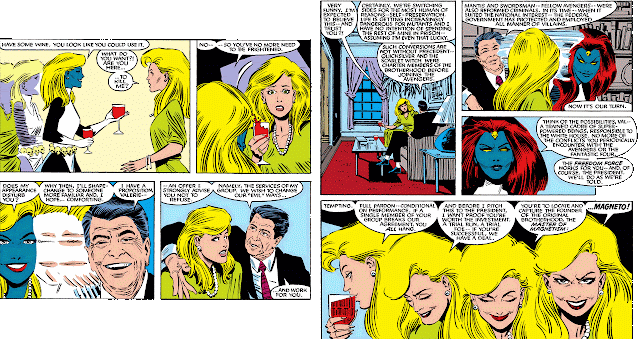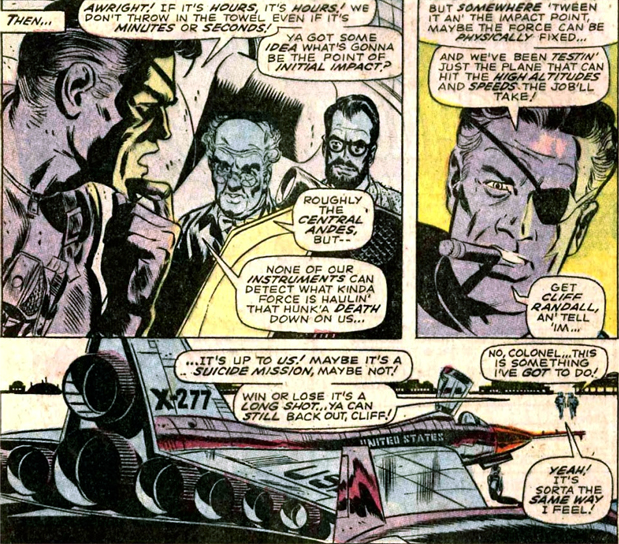As an unofficial encore to Captain Marvel's role as chairwoman of the Avengers during writer Roger Stern's run on the title, those of you who have followed Stern's Marvel work and were fans as well of either The Avengers or X-Men might have caught the four-issue limited series The X-Men vs. the Avengers from mid-1987, which Stern would write ¾ of (at which time a different writer/artist team would take the reins of the story for its conclusion). The series takes place roughly between the time Captain Marvel accepts Captain America's nomination for the team's leadership position, and the Avengers' mission to Olympus which would conclude Stern's work on the book. The true focus of the series, however, would prove to be Magneto, the Master of Magnetism--and, more specifically, the resolution of the Paris trial which had been convened to hold him accountable for past crimes against the human race.
Yet the prelude to this story occurs years earlier, with the explosive arrival of an alien we would come to know in the New Mutants as Warlock.
Magneto survives the impact, thanks to the ministrations of Lee Forrester, who fishes him out of the ocean and brings him to the island where he once fought a pitched battle with the X-Men--the repercussions of which led, in part, to his trial. As for his asteroid, two sizable parts of it survive their fall to Earth a few years later, and draw the interest of not only Magneto but three super-teams which would vie to decide his ultimate fate.


















